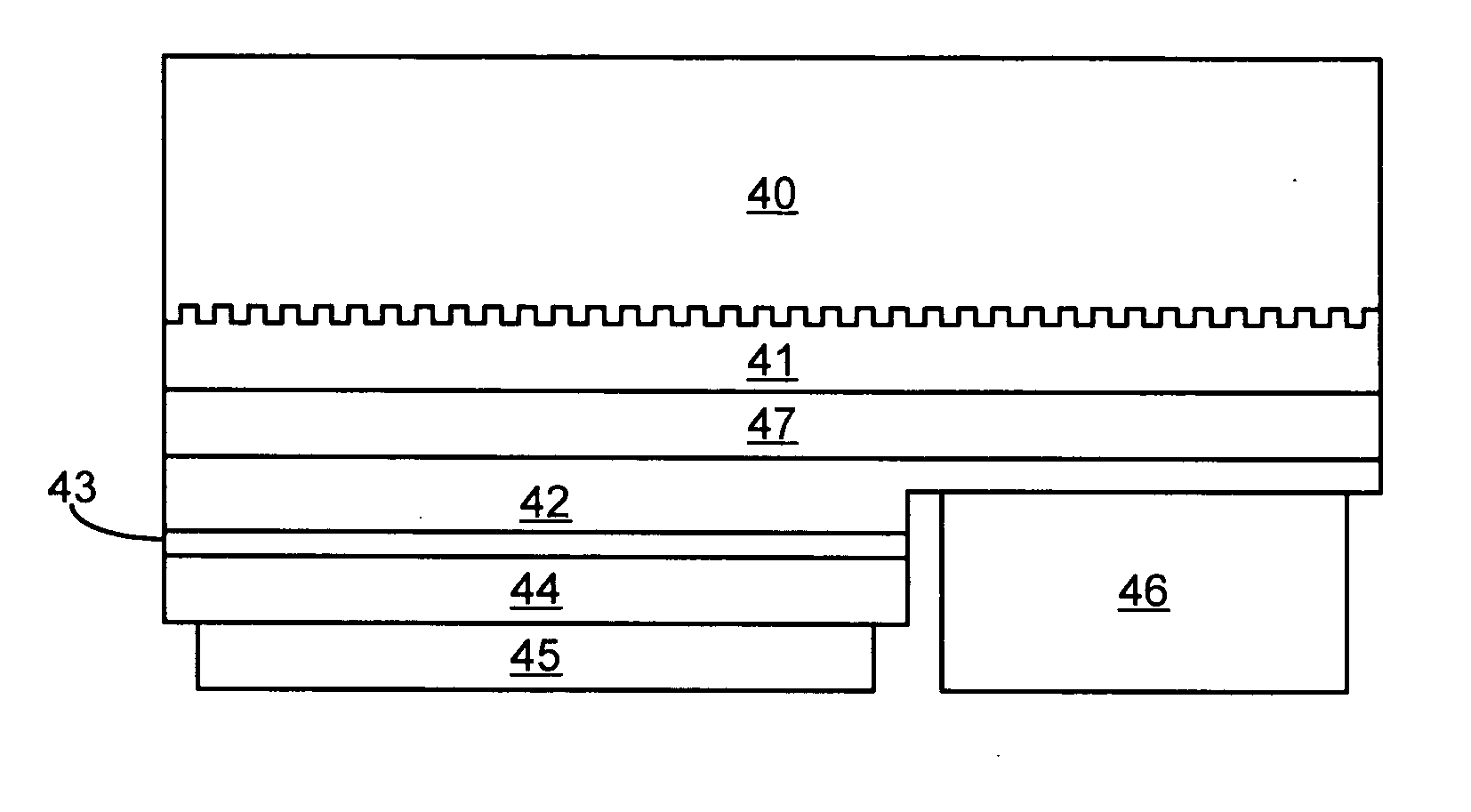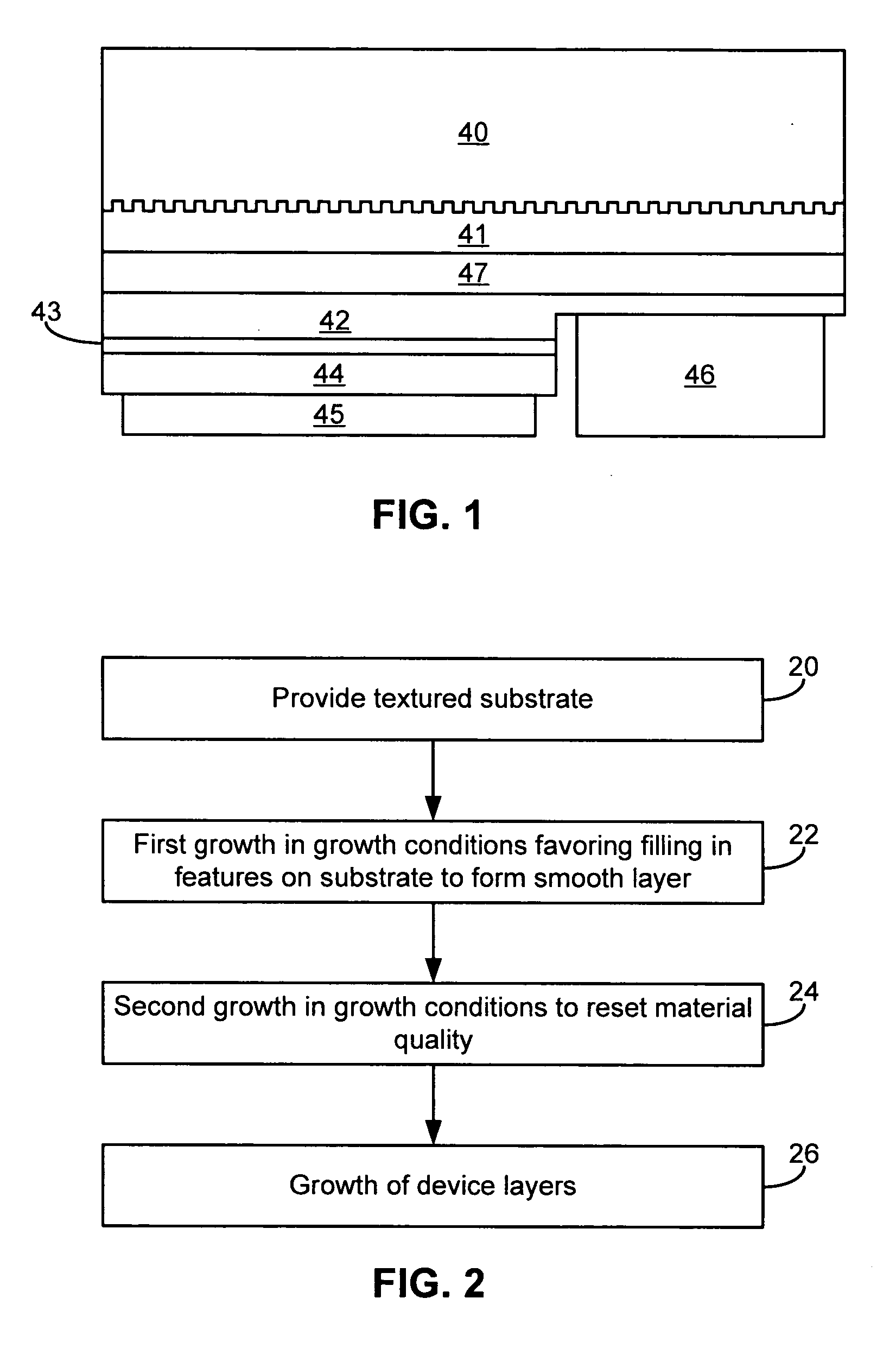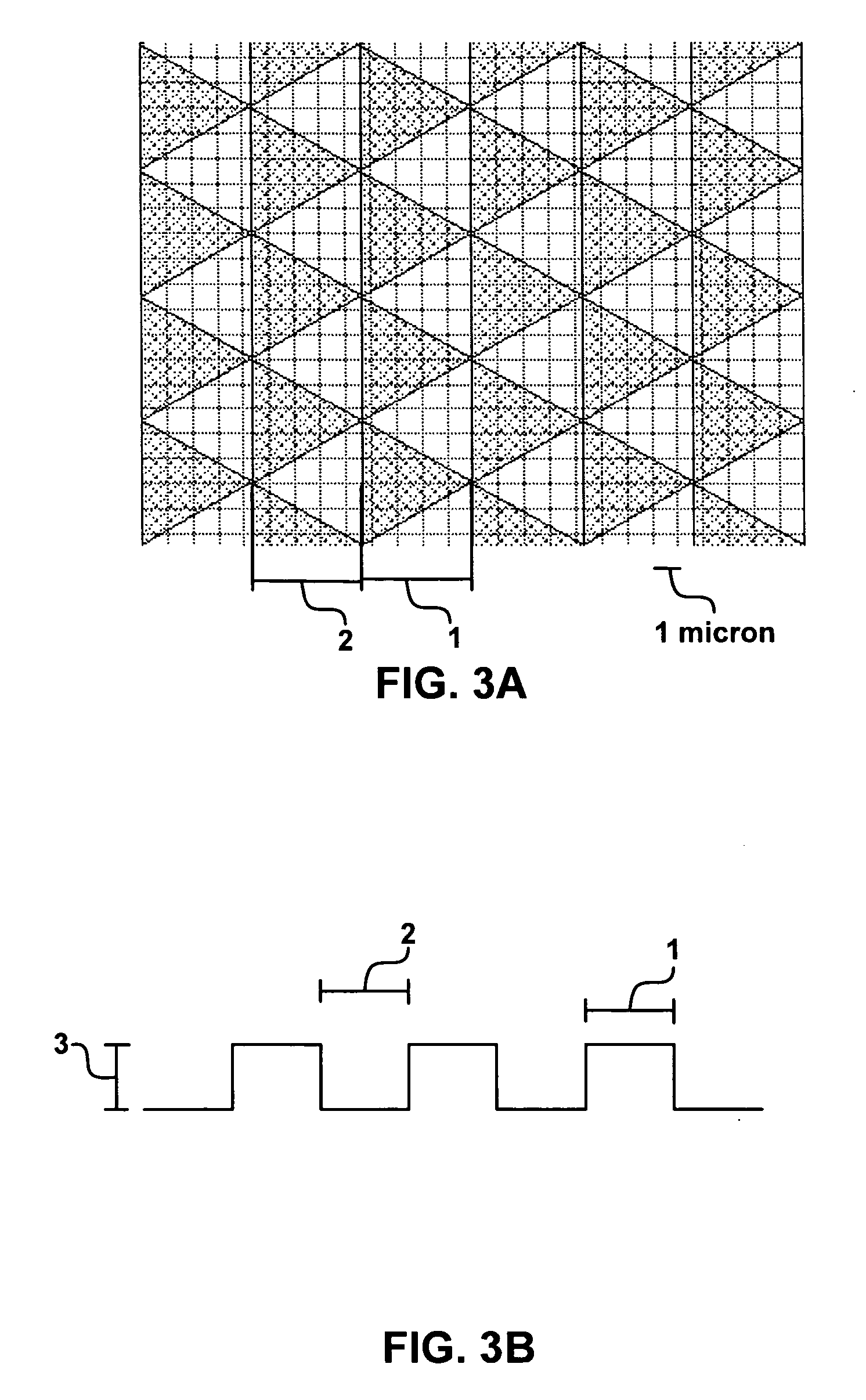Growth of III-nitride light emitting devices on textured substrates
a technology of textured substrates and light emitting devices, which is applied in the direction of semiconductor/solid-state device manufacturing, semiconductor devices, electrical devices, etc., can solve the problems of significant attenuation of light and poor extraction efficiency, and achieve the effects of reducing the amount of total internal reflection, improving material quality, and high quality
- Summary
- Abstract
- Description
- Claims
- Application Information
AI Technical Summary
Benefits of technology
Problems solved by technology
Method used
Image
Examples
Embodiment Construction
[0013] Total internal reflection at the interface between a sapphire or other suitable substrate and the III-nitride device layers may be reduced by texturing or patterning the substrate. As used herein, “textured” refers to a substrate surface that is not smooth, either due to random roughening of the surface or due to forming a pattern of repeating features on the surface. For economy of language, many of the examples below refer to patterned substrate surfaces. It is to be understood that the same principles may be applied to devices with randomly roughened substrate surfaces. A patterned substrate generally has a thickness that varies with the pattern. As used herein, a “feature” on a patterned substrate refers to the parts of the pattern where the substrate is thicker than the minimum substrate thickness. For example, if a pattern on a substrate includes triangular regions where the substrate is thick interposed by triangular regions where the substrate is thinner, as illustrat...
PUM
 Login to View More
Login to View More Abstract
Description
Claims
Application Information
 Login to View More
Login to View More - R&D
- Intellectual Property
- Life Sciences
- Materials
- Tech Scout
- Unparalleled Data Quality
- Higher Quality Content
- 60% Fewer Hallucinations
Browse by: Latest US Patents, China's latest patents, Technical Efficacy Thesaurus, Application Domain, Technology Topic, Popular Technical Reports.
© 2025 PatSnap. All rights reserved.Legal|Privacy policy|Modern Slavery Act Transparency Statement|Sitemap|About US| Contact US: help@patsnap.com



